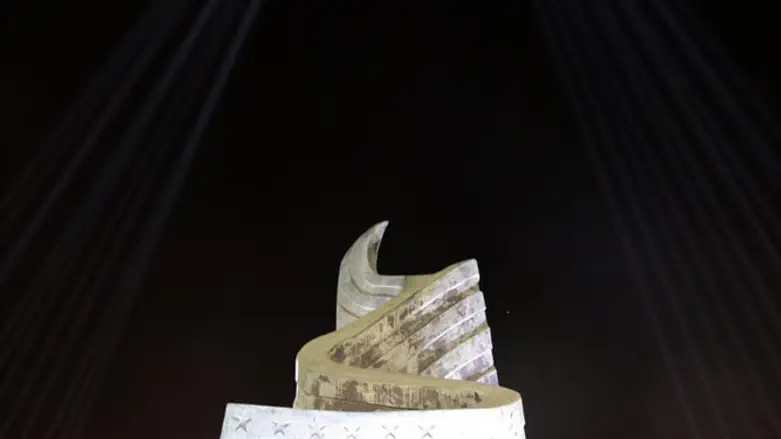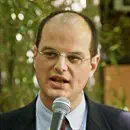
Hamburg was known for its mundane charm as the Reeperbahn red light district and as the place where the Beatles had their first international success. It has long enjoyed a reputation as a tolerant, multicultural, open and wealthy, almost Scandinavian, port city in the placid North of Germany, with a strong social democratic tradition.
Three of the four 9/11 pilots - Mohammed Atta, Marwan al-Shehhi and Ziad Jarrah - lived there. There they prepared, matured and hatched the attack. In old pre-war red brick houses. In Wilhelmsburg, a worn industrial neighborhood.
Mohammed Atta had rented a three-room apartment on the third floor. The house, according to the neighbors, was frequented by a large group of "very reserved" Arabs. Joerg Lewin, who hired Atta as a draftsman in his town planning studio, will say that he carried out his work with "extraordinary humility" at the university. His father wanted his son to be able to match the successes of his daughters. Both of Atta's sisters had achieved prestigious degrees: Azza had become a professor of botany and Mona a cardiologist in the most important hospital in Cairo.
When Atta, aged 24, arrived in Hamburg in the summer of 1992 the first thing he did was ask where the nearest mosque was. For someone who left the room when the television was showing belly dancing, Hamburg was a shock.
Ziad Jarrah, who will crash with United Flight 93 in Pennsylvania on 11 September, was a Lebanese studying near Atta at another school in Hamburg, the School of Applied Sciences. Two of Jarrah's closest friends at the school, Melih Demir and Michael Gotzmann, will say he "was very European and open to the world," even though they had never seen him touch alcohol in two years and that he never went to parties with them.
Fortunately for Atta, the dean of the faculty, Dittmar Machule, was a Middle East specialist. Machule says he found in Atta "one who shared his passion for the old cities of the Middle East". He will describe Atta as “a kind, sensitive boy… with deep black eyes. Eyes that spoke. They spoke of intelligence, knowledge, vivacity”. He prayed five times a day, fasted on feast days and attended the mosque as soon as possible. When he couldn't go to the mosque, he prayed in the corner of the classroom during class. Sometimes he wore a beard.
Atta had worked in an urban planning firm, Plankontor. He was a "perfect employee," says Joerg Lewin, one of the company's partners; but he had never bonded with other colleagues. He stayed at the drawing board or knelt and prayed. "He criticized Western societies," recalls a colleague.
Atta got a three-month study trip to Cairo, sponsored by the German Ministry of Economic Cooperation and Development. Germany had given him an email address (el-amir@tu-harburg.de) and a room to pray. It was called Islam AG (Arbeitsgemeinschaft, working group) and, in addition to a prayer mat, it was also equipped with a computer. In December 1994, Professor Hauth and Atta traveled to Aleppo in Syria. They spent three weeks together, staying at the Al Bustan hotel in the western part of the city. The purpose of their visit was to pursue the idea ofwriting a thesis on Aleppo together.
In 2006, a video emerged of two bearded young men laughing and joking in front of the camera. They appear relaxed, intelligent. They look at a piece of paper. It says "al wasiyyah". It means "the will". It is the handwritten testament of Ziad Jarrah, the companion of Atta.
Shortly after his return from Mecca, Atta asked two friends to witness his will. The will, dated March 6, 1996, would resurface five years later, in the suitcase abandoned by Atta after he boarded the American Airlines flight to Boston and diverted to New York. It is a mixture of Islamic texts and strict provisions for his funeral and on who is authorized to attend. Atta also claims to have dedicated life and death to Allah and forbids any woman to visit his tomb.
"As far as we know, Mohammed Atta was not a terrorist when he came to Hamburg," his principal, Machule, wrote in The Guardian. “He became a fanatic while he was here among us. I'm afraid it might happen again ”. And so in Hamburg, in the most liberal of Western cities, young Islamic men were turning into mass murderers, still a secret to their well-meaning German friends, teachers and employers. Reading the incredible stories, one wonders: how many others are there like them in our multicultural soft underbelly?
On the title page of his thesis, finally ready, Mohamed Atta wrote: “My prayer, my sacrifice, my life and my death belong to Allah, the Lord of the worlds”.
These days the trial for the massacres of November 3, 2015 in Paris (130 dead) opened and in the courtroom the first words of Salah Abdeslam, the main accused terrorist who hid protected in Brussels, were: "There is no he is another god besides Allah and Mohammed is his messenger ”.
And Europe doesn't know what to answer.
Giulio Meotti is an Italian journalist with Il Foglio and writes a twice-weekly column for Arutz Sheva. He is the author, in English, of the book "A New Shoah", that researched the personal stories of Israel's terror victims, published by Encounter and of "J'Accuse: the Vatican Against Israel" published by Mantua Books, in addition to books in Italian. His writing has appeared in publications, such as the Wall Street Journal, Gatestone, Frontpage and Commentary.
